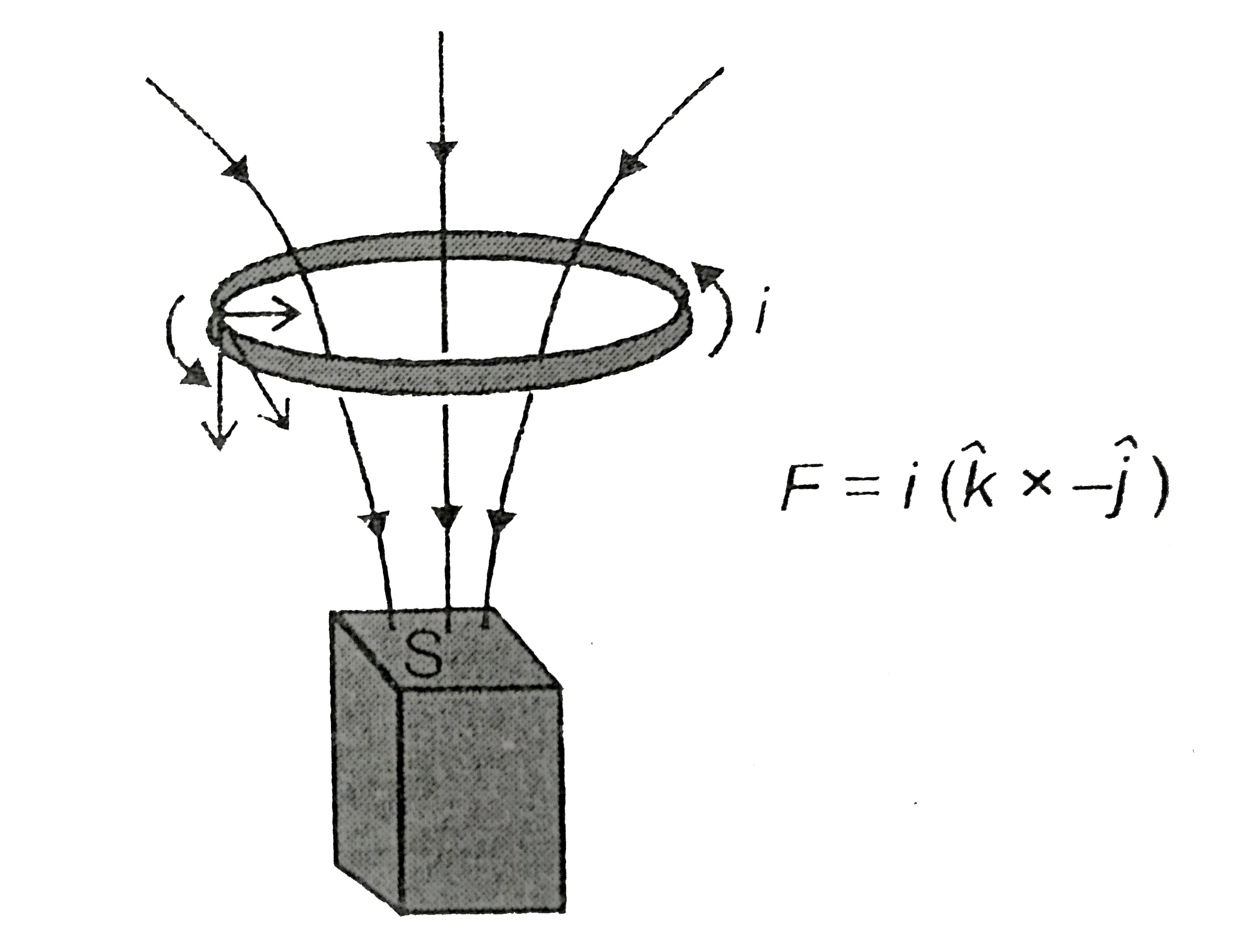Explain the following:
Why are the field lines repelled (expelled) when a diamagnetic material is placed in an external uniform magnetic field?
To explain why the field lines are repelled (or expelled) when a diamagnetic material is placed in an external uniform magnetic field, we can break down the explanation into several steps:
1. Understanding Diamagnetic Materials:
- Diamagnetic materials are those that have no unpaired electrons. When placed in a magnetic field, they exhibit a very weak form of magnetism, which is characterized by a negative magnetic susceptibility.
Hint: Remember that diamagnetic materials do not retain any magnetization in the absence of an external magnetic field.
2. Effect of External Magnetic Field:
- When a diamagnetic material is introduced into an external uniform magnetic field, the external magnetic field influences the motion of the electrons within the material.
Hint: Consider how external forces can influence the internal structure of materials.
3. Induction of Magnetic Dipoles:
- The external magnetic field causes the electrons in the diamagnetic material to rearrange themselves. They cluster into small groups, which behave like tiny magnetic dipoles. Importantly, these induced dipoles align in the opposite direction to the external magnetic field.
Hint: Think about how magnetic dipoles interact with magnetic fields and how they can be oriented.
4. Repulsion of Magnetic Field Lines:
- Because the induced dipoles in the diamagnetic material are oriented opposite to the external magnetic field, they create a magnetic field that opposes the external field. As a result, the external magnetic field lines are repelled away from the diamagnetic material.
Hint: Visualize how magnetic field lines behave around different types of materials and how they can be altered by the presence of those materials.
5. Path of Magnetic Field Lines:
- Instead of passing through the diamagnetic material, the magnetic field lines will bend around it. This bending indicates that the field lines are repelled, leading to the conclusion that diamagnetic materials effectively push away magnetic field lines.
Hint: Consider how the presence of an object can alter the expected path of magnetic field lines.
Summary:
In summary, when a diamagnetic material is placed in an external uniform magnetic field, it induces small magnetic dipoles that align opposite to the external field. This causes the external magnetic field lines to be repelled, resulting in a bending of their path around the diamagnetic material.
- Diamagnetic materials are those that have no unpaired electrons. When placed in a magnetic field, they exhibit a very weak form of magnetism, which is characterized by a negative magnetic susceptibility.
- When a diamagnetic material is introduced into an external uniform magnetic field, the external magnetic field influences the motion of the electrons within the material.
- The external magnetic field causes the electrons in the diamagnetic material to rearrange themselves. They cluster into small groups, which behave like tiny magnetic dipoles. Importantly, these induced dipoles align in the opposite direction to the external magnetic field.
- Because the induced dipoles in the diamagnetic material are oriented opposite to the external magnetic field, they create a magnetic field that opposes the external field. As a result, the external magnetic field lines are repelled away from the diamagnetic material.
- Instead of passing through the diamagnetic material, the magnetic field lines will bend around it. This bending indicates that the field lines are repelled, leading to the conclusion that diamagnetic materials effectively push away magnetic field lines.
In summary, when a diamagnetic material is placed in an external uniform magnetic field, it induces small magnetic dipoles that align opposite to the external field. This causes the external magnetic field lines to be repelled, resulting in a bending of their path around the diamagnetic material.
Topper's Solved these Questions
- BOOK - VMC MODULES ENGLISHCHAPTER - MAGNETIC EFFECTS OF CURRENT EXERCISE - LEVEL 0 ( SHORT ANSWER TYPE-II )13videos
MAGNETIC EFFECTS OF CURRENT
- BOOK - VMC MODULES ENGLISHCHAPTER - MAGNETIC EFFECTS OF CURRENT EXERCISE - LEVEL 0 (LONG ANSWER TYPE )3videos
MAGNETIC EFFECTS OF CURRENT
- BOOK - VMC MODULES ENGLISHCHAPTER - MAGNETIC EFFECTS OF CURRENT EXERCISE - JEE Advanced (Archive)78videos
MAGNETIC EFFECTS OF CURRENT
- BOOK - VMC MODULES ENGLISHCHAPTER - LIQUIDSEXERCISE - JEE ADVANCED (LEVEL -2)55videos
LIQUIDS
- BOOK - VMC MODULES ENGLISHCHAPTER - MOCK TEST 1EXERCISE - PART I : PHYSICS (SECTION-2)10videos
MOCK TEST 1
Similar Questions
A ferromagnetic material is placed in an external magnetic field. The magnetic domains
View SolutionA diamagnetic material in a magnetic field moves
View SolutionA diamagnetic material in a magnetic field moves
View SolutionA coil carrying electric current is placed in uniform magnetic field
View SolutionA diamagnetic substance when placed gently in a magnetic field moves
View SolutionWhen would a moving charged particle travel undeviated in a uniform magnetic field ?
View SolutionState whether the magnetic field lines in part (a) represent a uniform magnetic field or non uniform magnetic field ?
View SolutionStatement-1 In the arrangement shown, the hoop carries a constant current. This hoop can remain stationary under the effect of magnetic field of the bar magnet

Statement-2 When a magnetic dipole is placed in a non-uniform magnetic field. It experiences a force opposite to direction of external magnetic field at its centreView SolutionDraw magnetic field lines when (a) (i) diamagnetic ,(ii) paramagnetic substance is placed in an external magnetic field. Which magnetic property distinguishes this behaviour of the field lines due to the two substances ?
View SolutionDeduce an expression for torque acting on a bar magnet placed in uniform external magnetic field.
View Solution
